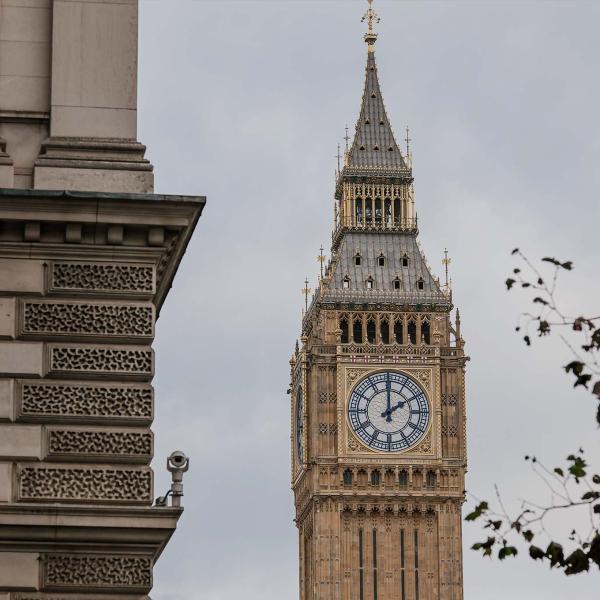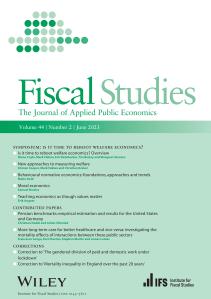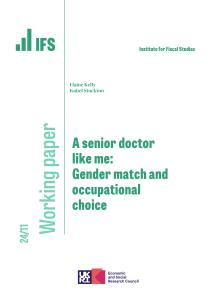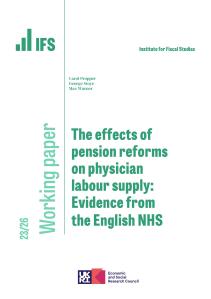Most public service spending in Scotland – including the vast majority of what is spent on health, education, social care, transport, public order and safety, environmental and rural affairs and housing – is devolved to the Scottish Government and Scottish local authorities. Spending on services that are largely devolved amounted to £41.6 billion in 2019−20, the most recent year for which data are available, according to the data underlying both the Scottish and UK governments’ public spending statistics. This equates to £7,612 per person in Scotland, which is around 27% higher than the £5,971 per person spent on those areas in England, and 13% higher than the £6,748 spent in Wales (where the population is older, poorer and sicker than in Scotland).
But how is this higher spending allocated across different services? How have these allocations changed over time? And how do a range of headline indicators of public service outcomes vary between Scotland and England?
Key findings
- The high level of spending on (largely) devolved public services is explained by the high levels of block grant funding received by the Scottish Government from the UK Treasury – which does not depend on any needs assessment. In contrast, spending on benefits and tax credits is largely based on common eligibility criteria that apply across the UK – although the Scottish Government has increased the generosity of some types of benefits using its newly devolved powers. Benefit and tax credit spending per person was 6% higher than in England in 2019− Together with other non-devolved spending that can be directly attributed to Scotland, this means total identifiable public spending was 20% higher than in England in 2019−20.
- The gap in spending per person between England and Scotland grew during the 2010s both for total identifiable public spending – from 16% in 2009−10 to 20% in 2019−20 – and for spending on largely devolved public services – from 21% to 27%. This largely reflects the impact of the Barnett formula (and a flaw in it up to 2015−16) during a period of austerity. However, the gap had been shrinking during the 2000s, partly as a result of the impact of the Barnett formula during a period of big spending increases, and partly as a result of bigger increases in spending funded by council tax in England. The gap in spending per person on largely devolved public services today is therefore similar to its 1999−2000 level. The gap in total identifiable public service spending per person is actually smaller than 20 years ago (23%) reflecting a decline in benefit entitlement in Scotland over this period.
- Health spending is the largest area of public service spending in both Scotland and England. But it is a smaller share of overall identifiable public spending in Scotland: just under 22% as opposed to just over 25% in England. This reflects a trend going back 20 years of relatively smaller increases in health spending in Scotland than in England. Real-terms health spending per person in Scotland in 2019−20 was around two-thirds (68%) above its 1999−2000 level, compared with almost double (98% higher than) its 1999−2000 level in England. As a result, while health spending per person in Scotland was 22% higher than in England in 1999−2000, this gap had fallen to 10% by 2009−10, 7% in 2015−16 and 3% in 2019−20
- The continuation of this convergence in recent years is perhaps surprising given the Scottish Government’s policy of passing on funding increases received as a result of increases in English NHS spending to the Scottish NHS. It also contrasts with the increases in funding for the health budget portfolio set out in the Scottish Government’s budget (which since 2015−16, at least, have implied similar increases per person to those in England). In part, this may reflect the fact that a growing proportion of the health budget portfolio is allocated to other areas such as early years and social care services. But this factor seems unlikely to explain the discrepancy in full. Given the policy interest in this question, the Scottish Government should reconcile and explain the differences between its spending estimates and budget portfolio allocations.
- Notwithstanding this, it is mainly non-health services that benefit from higher levels of funding in Scotland. For example, official estimates show spending per person on education now being 28% higher than in England, up from just 5% higher in 2009− This reflects the fact that cuts in education spending are estimated to have been smaller in Scotland over the last 10 years: 5% versus 22%. Indeed, focusing on the period since 2015−16, education spending per person is estimated to have risen by 6% in Scotland (with the biggest increases for early years spending), but fallen by 6% in England. Importantly though, these official estimates do not include the expected cost of writing off unpaid student loans – which will be a much bigger issue for England than Scotland, given the tuition fees paid by English students. If these loan write-offs were taken into account, the gap in education spending would be smaller.
- Spending on adult social services has also risen relative to England, and was 43% higher per person in 2019−20, compared with 30% higher in 2009−10 and 27% higher in 1999−20 The widening of the difference is likely to reflect, at least in part, the Scottish policy of free personal care – extended to working-age adults in 2019. Other areas with relatively high levels of spending include: public order and safety (i.e. the courts and police and fire services), on which spending per person was 19% higher than in England in 2019−20, transport (39% higher), environmental protection (54% higher), recreation and culture (76% higher) and housing and community development (96% higher).
- Comparing service quality between the nations of the UK is difficult because of a lack of comparable data. NHS waiting times are one exception. These show that prior to the COVID-19 crisis, the Scottish NHS was closer to meeting the target of admitting or discharging 95% of visitors to A&E within 4 hours (84% in December 2019) than the English NHS (80%). But it was less successful at treating patients within 18 weeks of referral for elective treatment (79% versus 83%).
- Despite substantially higher levels of schools spending per pupil, Scottish secondary pupils do not outperform their English peers on international assessments. This is particularly evident in maths and science, where Scottish pupils’ achievement has fallen over the last 15 years while performance in England has held up to a much greater extent. And, despite substantially higher spending on higher education to underwrite tuition-free HE for undergraduates, the share of 18-year-olds entering HE has grown more slowly in Scotland than in England.
- Compared with England, Scotland has prioritised early education to a greater extent than childcare, with no funded childcare programmes explicitly targeted at working families and much tighter means-testing on the offer for 2-year-olds. Following a COVID-related delay, the Scottish Government will double childcare entitlements for eligible children from August this year. In contrast to England, the Scottish Government has substantially increased per-hour funding to help providers with this transition, but delivering such a large expansion in early years entitlements will still pose challenges.











